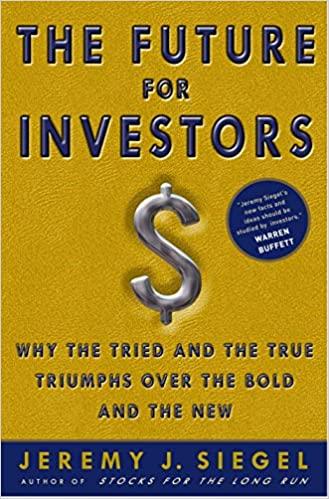Answered step by step
Verified Expert Solution
Question
1 Approved Answer
In Portfolio 1 2 3 , create a ranking system based on the following combination of signals: i ) 4 0 % Quality i .
In Portfolio create a ranking system based on the following combination of signals:
i Quality
i Gross Profitability: GrossProfitTTMAstTotQ
i Piotroski Score: PiotFScore
ii Trends
ii Momentum: RetYChg RetWChg
iii Information
iii Trading Volume Acceleration: VolDAvgVolMAvg
iii Analyst Disagreement: NextFYEPSStdDevAbsNextFYEPSMean
Analyst Disagreement is a negative signal ie lower is better
Backtest over two time periods as instructed below:
Time period: MAX or LAST years.
Universe: PRussell
Benchmark: Russell
Rebalancing Frequency: every weeks
Number of buckets
ALL THE OTHER OPTIONS: use P default settings.
Which of the options below comes closest to the SPREADS of the two backtests?
MAX: per year; LAST YEARS: per year.
MAX: per year; LAST YEARS: per year.
MAX: per year; LAST YEARS: per year.
MAX: per year; LAST YEARS: per year.
MAX: per year; LAST YEARS: per year.
MAX: per year; LAST YEARS: per year.
MAX: per year; LAST YEARS: per year.
MAX: per year; LAST YEARS: per year.
MAX: per year; LAST YEARS: per year.
MAX: per year; LAST YEARS: per year.
Consider the backtests over the MAX time period and over LAST years period from Question Did the predictive factors "work" in predicting returns over the MAX time period? And over the LAST years? Explain.
Consider the backtests from Question Describe the background calculations Portfolio uses to generate the Total Return bar graphs. Be as precise as you can so that a person that knows nothing about Portfolio or backtesting can reproduce the results if given all the data.
Consider the backtest over the MAX time period in Question Consider an investor that, in January invested $ in the dynamic investment strategy corresponding to Bucket of the backtest. Assume the investor followed the strategy from then until today without withdrawing any cash. According to backtest results, and ignoring any taxes, approximately how much money the investor would have today? Again ignoring taxes, can you name one reason why the investor would in fact have less money than that today because the Question backtest ignores an important real world consideration?
Can backtests such as the one on Question potentially inform the debate on whether stock markets are efficient? Why? Why not? Explain.
Consider the ranking system in Question Use the GrinoldKahn procedure to estimate the difference between the return of Zoetis ticker ZTS and the return of Russell Index over the next months. That estimate is closest to:
Step by Step Solution
There are 3 Steps involved in it
Step: 1

Get Instant Access to Expert-Tailored Solutions
See step-by-step solutions with expert insights and AI powered tools for academic success
Step: 2

Step: 3

Ace Your Homework with AI
Get the answers you need in no time with our AI-driven, step-by-step assistance
Get Started


